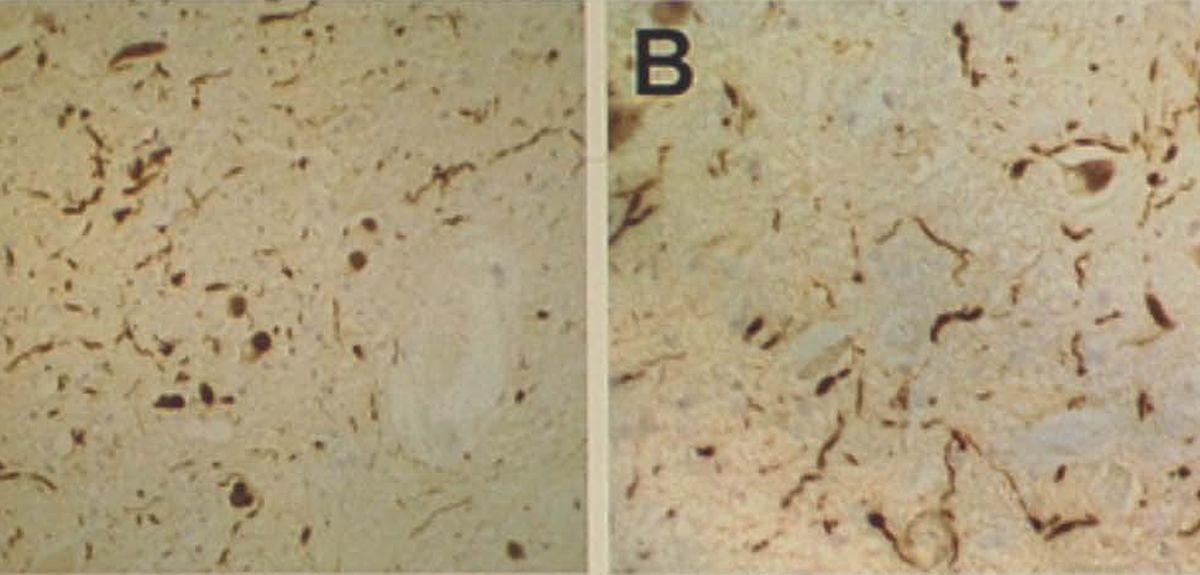
Image credit: Prof George Tofaris
Reducing harmful proteins in the fight against dementia
We probably all know someone who has dementia. By 2025, there will be 1 million people affected by it in the UK. Alzheimer’s disease is well known as the most common cause of dementia. But what about the third most common cause of dementia, Dementia with Lewy Bodies (DLB)?
Dementia with Lewy bodies
Frederic Henry Lewy, a prominent Jewish German-born American neurologist, first described the phenomenon that came to be known as 'Lewy bodies' in 1912. These 'bodies' are clumps of a sticky protein called alpha-synuclein that build up in nerve cells in the brain, causing damage and eventually death to these cells. Typically, they affect the cells that control thinking, memory and movement. In fact, Lewy bodies are the underlying cause of several progressive diseases affecting the brain and nervous system, including not only DLB but also Parkinson's disease.
We tend to get rid of this particular alpha-synuclein protein quite slowly, using a sophisticated 'clean-up crew' of enzymes. Studies of the brains of people who have died as a result of DLB have shown that one of these sets of enzymes is abnormally increased in the cells that contain the toxic protein clumps.
On the face of it, this may not seem to be a problem, but the system of waste-disposal enzymes is a complex one. They each have different roles and work together to regulate the level of alpha-synuclein. One set of enzymes is responsible for directly attacking the protein, whereas another – the one that is abnormally increased in DLB cases – counteracts this action. This set of enzymes works to either elongate or trim off a tag on alpha-synuclein. This tag is made up of molecules of a small protein called ubiquitin, and its regulation goes awry in patients with DLB.
Targeting the abnormally increased enzyme
Associate Professor George Tofaris, together with his research group in the Nuffield Department of Clinical Neurosciences, is working on the development of targeted biological therapies in neurodegenerative disorders. George explains that when it works, this tagging system is essentially 'a kiss of death for proteins, but a kiss of life for the cell because it gets rid of unwanted or toxic proteins'.
Alzheimer's Research UK has allocated £50,000 to George and his team to investigate how the enzymes in the ubiquitin system might be targeted, in order to improve the disposal of alpha-synuclein. So how will the team go about this ambitious project over the next two years?
The first step is to work with others on screening the hundreds of possible chemical compounds that may have an effect on such enzymes in the test tube. Researchers will identify the structures of the compounds and make computational improvements in order to refine the list of compounds that will be used in the next stage of the experiment.
Moving on the second stage, George and his team will test the compounds on human brain cells. Researchers can create cortical neurons and dopamine cells – the brain cells affected by Lewy bodies – from skin cells, by using genes that regulate gene expression. This stem-cell technique is invaluable in allowing scientists to go straight from the test tube to working directly on a real human brain cell. The team will treat these brain cells with compounds and see which one has the most success in destroying the clumps of alpha-synuclein that can be triggered in these cells.
Neurological research such as this is mirroring the work that has been going on in the field of cancer for some time: targeting specific enzymes that have been identified in the lab as having a critical role in disease.
Paving the way for a new drug
After identifying an effective compound, the next step would be to test it in animals to see how the drug might affect the whole system, and to find out whether it can get through the blood brain barrier, a semi-permeable membrane separating the blood from the cerebrospinal fluid.
The good news is that even if this work doesn’t eventually result in a drug in tablet form, scientists will at least be in possession of good tools that can be used to manipulate alpha-synuclein and better understand how it is targeted for destruction.